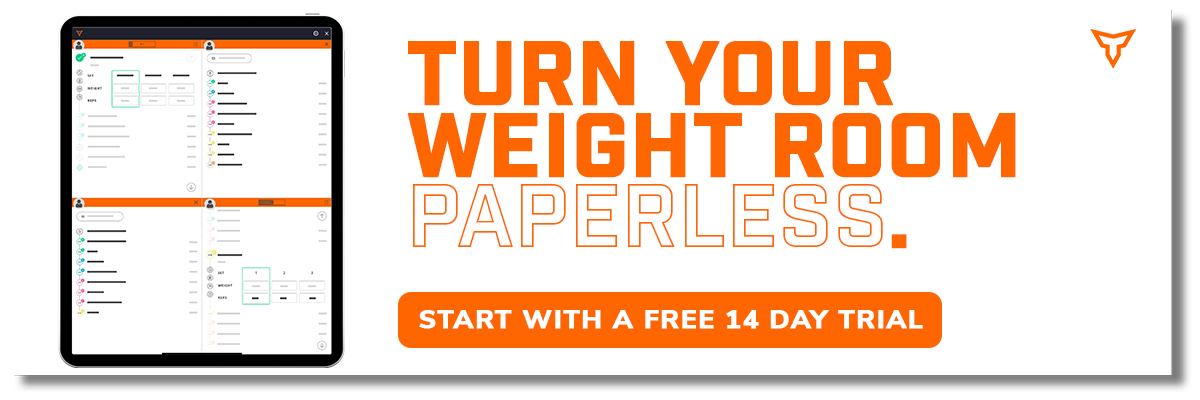Money Never Sleeps: 3 Tips to Better Organize Private Facility Finances
For those who run their own business or own their own facility in the private sector, having an understanding of finances is a necessary facet of the job. Whether we like it or not, cash is king and we must be able to ensure a steady flow of income while ensuring a healthy profit for the business itself.
Many coaches and trainers who run their business or their facilities tend to overestimate potential while underestimating the expenses that come out of left field. Furthermore, many owners tend to lose awareness of where their money is going and misjudge the ebbs and flows of the private sector profession. While I am all about ambition and earning potential, we need to account for trends and plan for a more consistent growth. If we put all our eggs in one basket, we could easily become bankrupt should something change (and it most likely will).
Trust me, I get it. As I write this, my staff and I are preparing to expand Iron Performance Center to a bigger location. As I am knee deep in paperwork and planning, this process has forced me to re-evaluate our operations and re-open our financials for a closer inspection. In the coming paragraphs, I outline some of the steps I’ve found helpful for managing finances for our facility while also providing some ideas and concepts for improving profit.
Step 1: Create an Income-Expense Spreadsheet
For those new to ownership, your monthly income-expense spreadsheet should be the guiding tool for the future. It will be your best guess at the costs associated with running your business while accounting for predicted generated income. With a few simple calculations, you should be able to dictate an approximate number to keep your company in the black; a necessity when looking to avoid becoming a statistic.
For those a few years deep already, perhaps you already have a firm grasp of your own system. I congratulate you. Feel free to skip ahead, otherwise perhaps you’ll find a couple new tips to adjust your own plan.
To start, create a new spreadsheet on Excel or Google Sheets. Personally, I prefer Google Sheets simply for the accessibility factor (I can adjust it anywhere on the cloud). While it may seem daunting, the spreadsheet itself can be valuable with a few simple columns and categories. I tend to go with the following:
- Fixed Expenses
- Consistent Costs
- Eg: Rent, Loan Repayment, Insurance, Payroll, etc.
- Include a PROFIT expense (the amount you put aside to save that isn’t touched)
- Variable Expenses
- Fluctuating Costs
- Eg: Utilities, Advertising, Supplies, etc.
- Income
- Cash In
- Eg: Training Revenue, Online Sales, Memberships, etc.
Organize 3 columns with these headers at the top. Proceed to then fill out each category with every single item that comes to mind. You can (and should) be as specific as possible. Be prepared to spend some time here; leave no stone unturned. If you are unsure about what to add, refer to my sample below (from 2018, yikes!) for some ideas.
If you are unsure as to the exact cost of certain items, my advice would be to do some research. Google is always ready to lend a hand. Call other owners or ask fellow coaches in the biz to get a rough estimate. See if you can get ideas of what software they use, what fees they charge and the costs associated with running their operation. If looking to own a space, be sure to ask about the average cost of utilities and insurance; that stuff adds up.
When inputting the numbers into your sheet, be sure to OVERESTIMATE your expenses and UNDERESTIMATE your income. While I love the idea of earning potential, it isn’t yet proven. Your landlord won’t care what you think you can make when the rent is due; be sure to be conservative at first. You can always adjust your sheet every quarter as you begin to see trends and gather new data.
Step 2: Implement a Profit-Loss Analysis
This step is more relevant once you’re running your operation. A profit-loss analysis is a good indicator of the actual performance of your business based on the categories chosen for each expense and income stream. As you proceed month to month, compare the actual numbers to those on your income-expense spreadsheet. Calibrate accordingly. Below are 3 months of profit loss from when I started IPC back in 2018.
Be aware that as your operation grows, so will your costs. I recommend reviewing and comparing your income-expense sheets with your profit-loss sheets every quarter. It helps keep your fingers on the financial pulse.
Now, if you’re brand new, I recommend getting accounting software (Quickbooks is what we use) to keep track of all your day to day financial transactions. While it can be done by hand on excel, it’s a ton more work. Pay for an accountant or bookkeeper while you're at it. If you’re adamant against getting software or hiring accountants, you can account for more back end man hours calculating year-end numbers. I wish you luck.
Step 3: Get Creative
So now that we have our sheets and reviewed our numbers, we can think about leaning out the operation while generating new streams of income. Granted this stuff takes time to see the fruits of one’s labor, but it comes with the territory. Adapt or die.
If you noticed that your net income is consistently negative, it’s time for a hard dose of reality. I know it feels like a punch to the gut, but it’s necessary. This is an opportunity to re-evaluate your spending while thinking of new ideas to generate income.
First, print off your monthly bank statements and review all of your expenses. See if any major ones stand out that are obvious luxuries that could be cut. If it isn’t necessary to run the operation, it can afford to go. Next, look for expenses that may have cheaper alternatives. Maybe you don’t need that 50 channel TV package or maybe you could do without ordering tons of merchandise. Take a good hard look at the spending habits of the business for potential saving opportunities; saving money is just as valuable as making money.
Finally, it’s time to get creative. Look to generate more income for your services or add another income stream. Believe it or not, there are many options that can be considered the low hanging fruit. Some ideas may include:
- Virtual Coaching
- Camps/Clinics
- Monthly Program Subscriptions
- Local Partnerships
- Small Group Training/Classes
- Referral Programs (Local Schools or Health Care Practices)
- Specialized Training (Sprint Training, Field Training, etc.)
- Bring A Friend Days
If your net income is consistently positive, congratulations! You can look to build on your operation and perhaps allocate more funds to certain facets. Perhaps you can allocate a greater percentage to new equipment or adding new staff. The choice is yours.
That being said, I still recommend allocating funds to saving (s*** happens). I would also still review expenses for necessity and look to build other income streams. It never hurts to stay ahead of the game.
In Closing
The private sector can fluctuate; the highs are high and the lows are low. By having a firm grasp of your finances and spending habits, you can better predict the future potential and plan your operation accordingly. While it’s incredibly rewarding to do what we love as coaches, it would be impossible without basic financial literacy. It’s no different than training our athletes; we can’t prepare or improve what we don’t know.
Subscribe to our blog
Subscribe to receive the latest blog posts to your inbox every week.
Related posts

How to Handle the Coach That Isn’t Cutting It

Building a Strong Brand Identity for Your Gym


